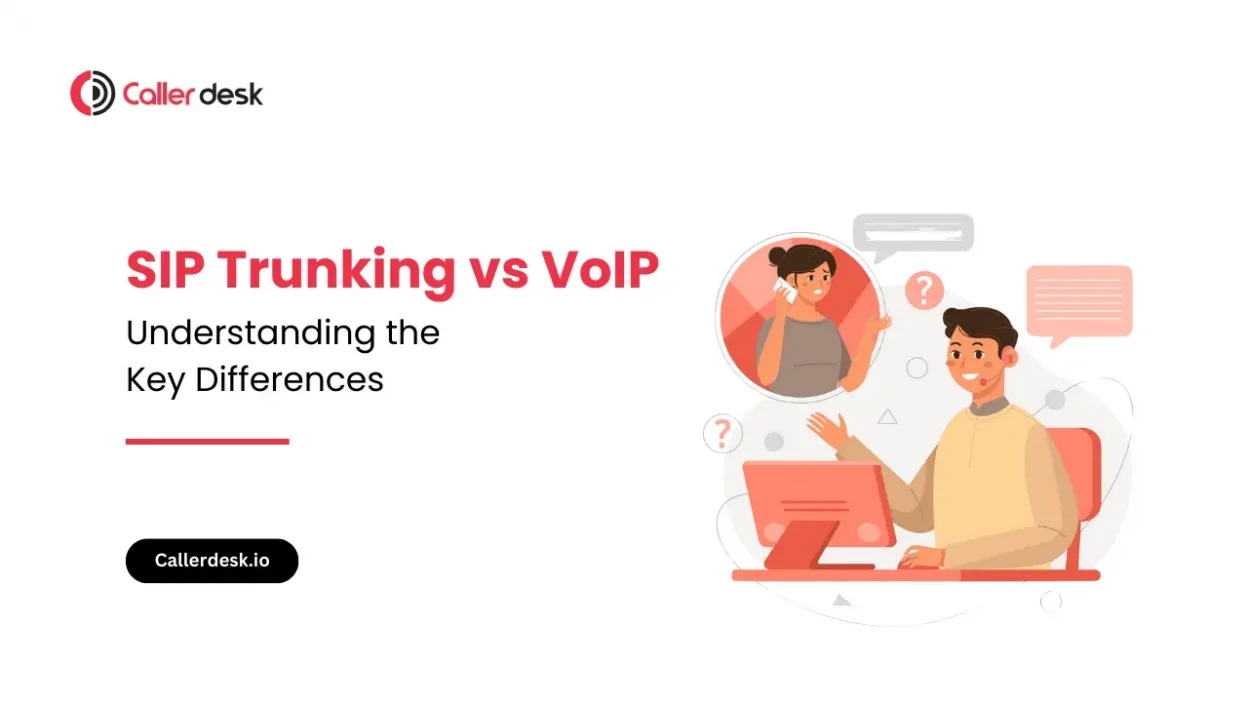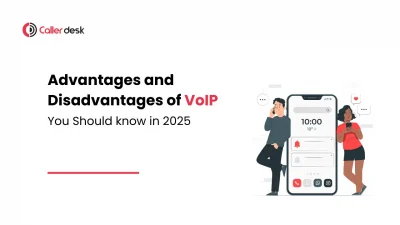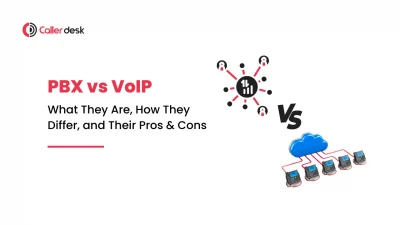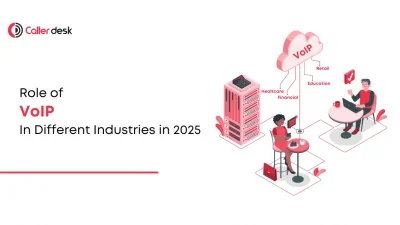Are you confused about whether to choose SIP trunking or VoIP for your business communications? You’re not alone. Both technologies have transformed how businesses communicate, but they serve different purposes and offer unique advantages. This blog will clarify the key differences between SIP trunking and VoIP to help you make an informed decision for your business.
What is VoIP (Voice over Internet Protocol)?
Voice over Internet Protocol (VoIP) is a technology that enables voice communication and multimedia sessions via the internet. Instead of using traditional phone lines, VoIP converts voice to digital signals and sends them via the internet. This method is inexpensive and includes services like as call forwarding, voicemail, and video conferencing.
Key Features of VoIP:
- Cost Savings: Reduces the cost of local and international calls.
- Scalability: Easy to add or remove users.
- Flexibility: Can be used on various devices (phones, computers, tablets).
- Advanced Features: Includes call forwarding, auto-attendant, voicemail to email, and more.
What is SIP Trunking?
Session Initiation Protocol (SIP) Trunking is a service that enables businesses to use VoIP technology to connect to traditional phone networks. Instead of using physical phone lines, SIP trunking uses a virtual connection. This approach can significantly reduce costs and improve the reliability of your phone service.
Key Features of SIP Trunking:
- Integration: Connects VoIP systems with the PSTN.
- Cost Efficiency: Reduces costs associated with maintaining multiple phone lines.
- Reliability: Offers better call quality and reliability.
- Scalability: Easily scalable without the need for additional physical lines.
Key Differences between SIP Trunking and VoIP
1. Purpose and Functionality
- VoIP: Specializes in transmitting voice communications through internet connections. It’s an end-to-end solution that includes various features for handling calls and multimedia sessions.
- SIP Trunking: A connection between VoIP systems and the traditional phone network. It allows the usage of VoIP services while keeping PSTN connectivity.
2. Implementation
- VoIP: Implemented directly on devices like phones, computers, or tablets using a VoIP service provider.
- SIP Trunking: Requires a SIP trunking provider and integration with an existing PBX (Private Branch Exchange) system.
3. Cost Structure
- VoIP: Generally has lower setup and operational costs, especially beneficial for small to medium-sized businesses.
- SIP Trunking: Can result in higher initial setup costs but offers significant long-term savings for businesses with high call volumes or multiple locations.
4. Scalability
- VoIP: Easily scalable by adding more users or devices through the VoIP provider.
- SIP Trunking: Also highly scalable, allowing businesses to add more lines without physical infrastructure changes.
5. Flexibility and Features
- VoIP: Offers numerous features, including video conferencing, email-accessible voicemail, and seamless mobile integration.
- SIP Trunking: Focuses on integrating these features with traditional phone systems, ensuring seamless communication across different networks.
Which One Should You Choose?
Choosing between SIP trunking and VoIP depends on your business needs:
1. VoIP
VoIP is perfect for businesses looking to upgrade their communication systems without heavy investment in hardware. It’s ideal for startups, remote teams, and growing businesses that value:
- Cost-effectiveness: Lower costs for local and international calls.
- Advanced features: Tools like video conferencing, call forwarding, and CRM integration enhance productivity.
- Flexibility: Scalable for growing teams and accessible on multiple devices like smartphones and desktops.
2. SIP trunking
- SIP trunking works well for businesses that already have an on-premise PBX system and want to integrate modern VoIP capabilities. It suits organizations that:
- Have existing PBX systems: Enables using your current infrastructure while modernizing.
- Need traditional network connectivity: Ensures seamless communication with landlines and mobile networks.
- Require reliability: Offers dedicated call channels with high call quality.
Choose VoIP for flexibility and simplicity, especially if starting fresh. Opt for SIP trunking if you’re modernizing existing PBX systems and need hybrid connectivity between traditional and modern networks. Both options bring significant cost savings and enhanced communication capabilities.
Conclusion
Choosing between SIP trunking and VoIP depends on your business needs and current setup. VoIP is great for businesses seeking a simple, cost-effective communication solution with advanced features and flexibility. It’s perfect for small to medium-sized businesses looking to improve communication without a big initial investment. On the other hand, SIP Trunking is ideal for businesses needing to maintain connectivity with traditional phone networks while using VoIP services. This is especially useful for companies with existing PBX systems or those with high call volumes and multiple locations.





